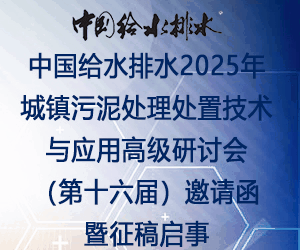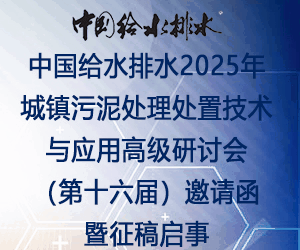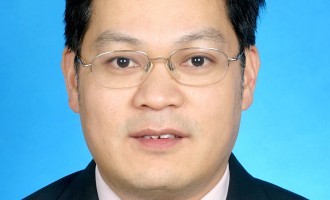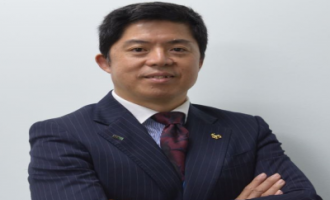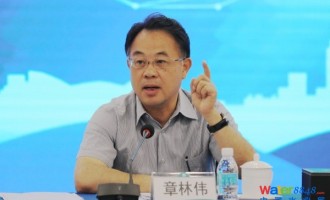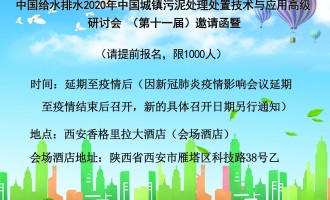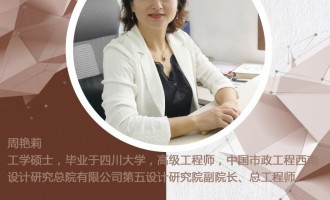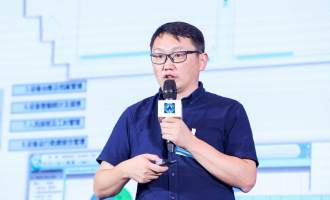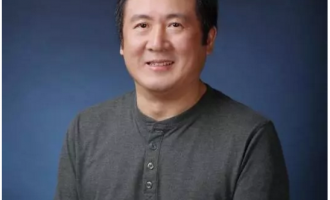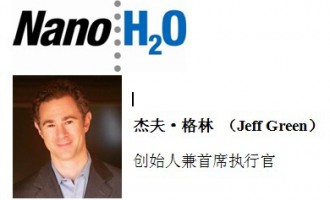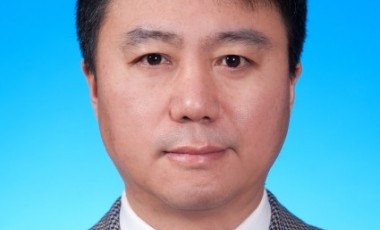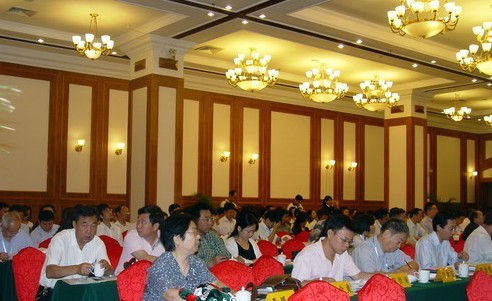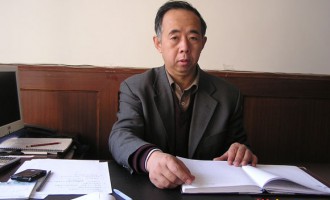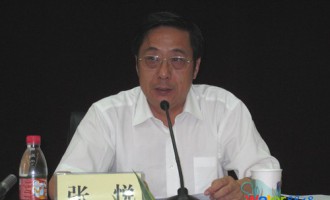|
主讲课程:
环境工程/环境科学专业本科生课程:《固体废物处理与资源化技术》(上海市精品课程)
环境工程/环境科学专业本科生课程:《固体废物管理》
环境工程专业本科生课程:《化学工程基础》
环境工程专业硕士生课程:《城市污泥处理工程》
环境工程专业硕士生课程:《固体废物处理与资源化技术》
环境工程专业硕士生课程:《化工原理》
环境工程/市政工程/环境科学专业博士生课程:《反应工程》
校内外学术及行政兼职:
同济大学环境科学与工程学院固体废物处理与资源化研究所所长。
住房和城乡建设部村镇建设司农村生活垃圾处理技术研究与培训中心主任。
《Waste Management》(Elsevier)副主编;《Journal of Material Cycles and Waste Management》(Springer)、《Waste and Biomass Valorization》(Springer)、《Journal of Environmental Sciences》(Elsevier)、《Journal of Industrial Research & Technology》(Malaysia, HATAM Publisher)、《重庆大学学报(英文版)》、《中国环境科学》、《环境化学》、《环境工程学报》、《农业环境科学学报》和《环境卫生工程》等学术刊物编委。
国际固体废物工作组织(International Waste Working Group,IWWG)Managing Board副主席,及其官方期刊《Waste Management》(Elsevier)Editorial Strategy Group成员 ;IWWG亚洲组织(IWWG-ARB)创始人之一;International Waste Management and Lanfill Symposium (Sardinia, Italy, 2年1届,由IWWG主办)执行委员会常任主席。多个境外由IWA或IWWG组织召开的国际会议学术委员会/组织委员会委员。
国家自然科学基金委员会第11和12届化学科学部专家评审组成员、国家自然科学基金委-广东省联合重点基金评审专家、国家自然科学基金委国际合作重点重大项目评审专家;973项目“城市固体废弃物填埋孕育环境灾害与可持续防控的基础研究”(编号2012CB719800)和“可燃固体废弃物能源化高效清洁利用机理研究”(编号2011CB201500)项目专家组成员。
全国城镇给水排水标准化技术委员会城市污水处理厂污泥处理处置分技术委员会(SAC/TC434/SC2)副主任委员、中国城市环境卫生协会专家组成员、中国环境保护产业协会生活垃圾焚烧发电技术创新联盟专家委员会委员、中国农业生态环境保护协会理事、住建部城镇环境卫生标准技术咨询专家组成员、Global WTERT(Waste-to-Energy Research and Technology, USA)Council成员、Suez Environment前瞻咨询委员会(FAC)委员。
中国科学院上海应用物理研究所学位评定委员会委员、城市污染控制国家工程研究中心(同济大学)技术委员会委员、热流科学与工程教育部重点实验室(西安交通大学)学术委员会委员;同济大学中法工程和管理学院学术委员会委员、环境工程专业(中法联合培养)硕士生项目主任。
教育经历
1980.09~1984.07,华东化工学院无机化工专业,本科毕业
1984.09~1987.07,华东化工学院化学工程专业,硕士毕业
1994.09~1998.03,同济大学环境工程专业,博士毕业
工作经历
1987.10~1990.07,同济大学环境科学与工程学院,助教
1990.08~1994.11,同济大学环境科学与工程学院,讲师
1994.12~2001.05,同济大学环境科学与工程学院,副教授,硕士生导师
2001.06至今,同济大学环境科学与工程学院,教授,博士生导师
1998.10~1999.10,法国国立桥路大学(ENPC),博士后研究
2008.08~2008.11,美国中央佛罗里达大学(UCF,国家留学基金委资助),高级访问学者
教育情况
2006.05~2011.05,同济大学2006年度校级精品课程,《固体废物处理与处置》(获2009年上海市精品课程)
2011.08~2013.08,同济大学卓越课程行动计划(专业核心课),《固体废物处理与资源化技术》
2010.12~2012.12,同济大学教学改革研究与建设项目,《固体废物处理与资源化技术》教学团队与教学模式综合改革
2008.05~2010.05,同济大学研究生优质课程立项建设,环境工程动力学原理/环境工程动力学分析
2008.05~2009.12,同济大学实验教学改革基金项目,固体废物处理与处置(获2009年同济大学第四期“实验教学改革基金”项目优秀奖)
2008.05~2009.12,同济大学教学改革研究与建设项目-教材建设,固体废物管理(第二版)(获2007年度上海市优秀教材三等奖)
2006.10~2008.12,同济大学教学改革研究与建设项目-教材建设,固体废物处理与资源化技术
环境科技创新人才培养基地--易腐生活废弃物生物代谢稳定工艺
国家大学生创新训练计划--抗生素药渣的厌氧消化处理、易腐有机生活垃圾的生物干化影响因素分析
指导博士后6名,其中已出站4名;指导博士研究生20名,其中已毕业工学博士12名,7名获同济大学优秀博士学位论文,5名获上海市研究生优秀成果(学位论文);指导硕士研究生78名(其中13名为工程硕士),其中已毕业工学(工程)硕士67名;指导本科生毕业论文25名,本科生毕业设计2名;已接待法国ENPC、ENSI、INRA留学生实习15名。
入选2010年度上海市优秀学科带头人计划(A类)。2009年度首届上海环境奖教金一等奖;2001~2004年度上海市市容环境卫生科技先进个人;2007年度同济大学优秀博士后合作导师;2008和2010年度同济大学奖励金教学系列二等奖,2003年度同济大学奖励金教学系列一等奖,2000年度同济大学优秀本科教学一等奖。
受邀在由教育部高等学校环境科学与工程教学指导委员会主办的第六届大学环境类课程报告论坛(2011年10月,苏州)上,作了“《固体废物处理处置》教学内容改革与创新”的大会报告;并在第二届大学环境类课程报告论坛(2007年11月,杭州)、第四届大学环境类课程报告论坛(2009年11月,广州)、第五届大学环境类课程报告论坛(2010年12月,上海)、第七届大学环境类课程报告论坛(2012年10月,昆明)上作专题报告。
科研项目
主持完成了国家自然科学基金青年/面上/重点项目、863计划重点项目课题、国家科技支撑计划重点项目课题、国家重大科技专项、科技部国际合作项目等国家级项目20余项。主持完成了住建部、教育部、环保部、上海市科委等省部级纵向课题和企业委托的横向项目60余项。
正在主持承担的科研项目
- 2012.01~2015.12,国家自然科学基金面上项目,厌氧消化环境中多纤维素酶体的功能调控(编号21177096)
- 2011.01~2015.12,国家973重点基础研究发展计划课题,可燃固体废弃物热转化过程中重金属的排放控制及关键污染物的协同脱除(编号2011CB201504)
- 2011.12~2015.12,水体污染控制与治理科技重大专项子课题,消化污泥梯度干化与稳定化产物土地利用技术研究(编号2011ZX07303-004-03)
- 2012.10~2014.09,上海市2012年度“科技创新行动计划”社会发展领域项目子课题,单相/两相厌氧消化处理工艺及恶臭污染控制(编号12231202003)
论文、著作与标准
在《Environmental Science and Technololgy》、《Water Research》、《Bioresource Technology》、《FEMS Microbiology Ecology》等国际学术刊物上发表SCI收录论文140篇(均为通讯作者);发表国内外学术会议论文100篇。
主编出版普通高等教育 “十一五”和“十五”国家级规划教材各1部(高等教育出版社,《固体废物管理》和《固体废物处理与资源化技术》);主编出版学术专著2部(科学出版社,《城市固体废物管理》和《城市污泥处理与利用》)。
受国家自然科学基金委邀请,参编学科发展战略研究专题丛书3部(固体废弃物污染及其控制与资源化. In: 《中国化学科学丛书:环境化学学科前沿与展望》,科学出版社,2011;城市固体废物减量化、无害化与资源化的技术原理. In: 《国家自然科学基金委员会—中国科学院2011-2020学科发展战略研究专题报告集》,中国建筑工业出版社,2011;固体废物无害处置与资源化利用原理和技术. In: 学科发展战略研究报告(2006年~2010年):建筑、环境与土木工程I,科学出版社,2006);编译科普论著1部;参编其它专著3部。
主编了1项行业标准(《CJJ/T52-XX 生活垃圾堆肥处理工程技术规程》修订);参编了1项国家标准(《GB16889-2008 生活垃圾填埋场污染控制标准》修订)和4项行业标准。
代表性论文(均为通讯作者):
- Hao L-P, Lü F, He P-J, Li L, Shao L-M. Predominant contribution of syntrophic acetate oxidation to thermophilic methane formation at high acetate concentrations. Environmental Science & Technology, 2011, 45(2): 508–513.
- Yu G-H, He P-J, Shao L-M, He P-P. Stratification structure of sludge flocs with implications to dewaterability. Environmental Science & Technology, 2008, 42(21): 7944–7949.
- Zhang H, He P-J, Shao L-M. Flow analysis of heavy metals in MSW incinerators for investigating contamination of hazardous components. Environmental Science & Technology, 2008, 42(16): 6211–6217.
- Zhang H, He P-J, Shao L-M, Lee D-J. Source analysis of heavy metals and arsenic in organic fractions of municipal solid waste in a mega-city (Shanghai). Environmental Science & Technology, 2008, 42(5): 1586–1593.
- Lü F, Hao LP, Guan DX, Qi YJ, Shao LM, He PJ. Synergetic stress of acids and ammonia on the shift of methanogenic pathway during thermophilic anaerobic digestion of organics. Water Research, 2013, abailable online, DOI:10.1016/j.watres.2013.01.049.
- Zhao L, Gu W-M, He P-J, Shao L-M. Biodegradation potential of bulking agents used in sludge bio-drying and their contribution to bio-generated heat. Water Research, 2011, 45(6): 2322–2330.
- Wu J, Zhang H, He P-J, Shao L-M. Insight into the heavy metal binding potential of dissolved organic matter in MSW leachate using EEM quenching combined with PARAFAC analysis. Water Research, 2011, 45(4): 1711–1719.
- Yu G-H, He P-J, Shao L-M. Novel insights into sludge dewaterability by fluorescence excitation-emission matrix combined with parallel factor analysis. Water Research, 2010, 44(33): 797–806.
- Zhao L, Gu W-M, He P-J, Shao L-M. Effect of air-flow rate and turning frequency on bio-drying of dewatered sludge. Water Research, 2010, 44(20): 6144–6152.
- Yu G-H, He P-J, Shao L-M, He P-P. Toward understanding the mechanism of improving the production of volatile fatty acids from activated sludge at pH 10.0. Water Research, 2008, 42(18): 4637–4644.
- Yu G-H, He P-J, Shao L-M, Zhu Y S. Extracellular proteins, polysaccharides and enzymes impact on sludge aerobic digestion after ultrasonic pretreatment. Water Research, 2008, 42 (8-9):1925–1934.
- Zheng Z, He P-J, Shao L-M, Lee D-J. Phthalic acid esters in dissolved fractions of landfill leachates. Water Research, 2007, 41(20): 4696–4702.
- Zhang B, He P-J, Lü F, Shao L-M, Wang P. Extracellular enzyme activities during regulated hydrolysis of high-solid organic wastes.Water Research, 2007, 41(19): 4468–4478.
- He P-J, Xue J-F, Shao L-M, Li G-J, Lee D-J. Dissolved organic matter (DOM) in recycled leachate of bioreactor landfill. Water Research, 2006, 40(7): 1465–1473.
- Wu J, Zhang H, He P-J, Shao L-M. Nondestructive characterization of the contaminated biodegradable fraction of municipal solid waste using synchrotron radiation-induced micro-X-ray fluorescence. Bioresource Technology, 2013, 132: 239–243.
- He P-J, Mao B, Shen C-M, Shao L-M, Lee D-J, Chang J-S. Cultivation of Chlorella vulgaris on wastewater containing high levels of ammonia for biodiesel production. Bioresource Technology, 2013, 129: 177–181.
- Hao L-P, Lü F, Li L, Shao L-M, He P-J. Shift of pathways during initiation of thermophilic methanogenesis at different initial pH.Bioresource Technology, 2012, 126: 418–424.
- Lü F, Hao L-P, Zhu M, Shao L-M, He P-J. Initiation of methanogenesis of vegetable waste at low inoculum-substrate ratio: Importance of spatial separation. Bioresource Technology, 2012, 105: 169–173.
- Zhao L, Wang X-Y, Gu W-M, Shao L-M, He P-J. Distribution of C and N in soluble fractionations for characterizing the respective biodegradation of sludge and bulking agents. Bioresource Technology, 2011, 102: 10745–10749.
- Wu D, Lü F, Gao H, Shao L-M, He P-J. Mesophilic bio-liquefaction of lincomycin manufacturing biowaste: The influence of total solid content and inoculum to substrate ratio. Bioresource Technology, 2011, 102(10): 5855–5862.
- Xu H-C, He P-J, Wang G-Z, Shao L-M, Lee D-J. Anaerobic storage as a pretreatment for enhanced biodegradability of dewatered sewage sludge. Bioresource Technology, 2011, 102(2): 667–671.
- Xu H C, He P-J, Wang G Z, Yu G-H, Shao L-M. Enhanced storage stability of aerobic granules seeded with pellets. Bioresource Technology, 2010, 101(21): 8031–8037.
- Yu G-H, Juang Y-C, Lee D-J, He P-J, Shao L-M. Enhanced aerobic granulation with extracellular polymeric substances (EPS)-free pellets. Bioresource Technology, 2009, 100(20): 4611–4615.
- Zhang D-Q, He P-J, Shao L-M. Effect of pH-neutralized leachate recirculation on a combined hydrolytic–aerobic biopretreatment for municipal solid waste. Bioresource Technology, 2009, 100(17): 3848–3854.
- Yu G-H, He P-J, Shao L-M. Characteristics of extracellular polymeric substances (EPS) fractions from excess sludges and their effects on bioflocculability. Bioresource Technology, 2009, 100(13): 3193–3198.
- Zhang D-Q, He P-J, Yu L-Z, Shao L-M. Effect of inoculation time on the bio-drying performance of combined hydrolytic–aerobic process. Bioresource Technology, 2009, 100(3): 1087–1093.
- Zhang D-Q, He P-J, Shao L-M. Bio-drying of municipal solid waste with high water content by aeration procedures regulation and inoculation. Bioresource Technology, 2008, 99(18): 8796–8802.
- Lü F, He P-J, Shao L-M, Lee D-J. Lactate inhibits hydrolysis of polysaccharide-rich particulate organic waste. Bioresource Technology, 2008, 99(7): 2476–2482.
- Zhang B, He P-J, Ye N F, Shao L-M. Enhanced isomer purity of lactic acid from the non-sterile fermentation of kitchen wastes.Bioresource Technology, 2008, 99(4): 855–862.
- Wu J, Zhang H, Yao Q-S, Shao L-M, He P-J. Toward understanding the role of individual fluorescent components in DOM-metal binding. Journal of Hazardous Materials, 2012, 215-216: 294–301.
- Wu J, Zhang H, He P-J, Yao Q, Shao L-M. Cr(VI) removal from aqueous solution by dried activated sludge biomass. Journal of Hazardous Materials, 2010, 176(1-3): 697–703.
- Yu G-H, He P-J, Shao L-M. Reconsideration of anaerobic fermentation from excess sludge at pH 10.0 as an eco–friendly process.Journal of Hazardous Materials, 2010, 175(1-3): 510–517.
- Zhang D-Q, He P-J, Shao L-M. Potential gases emissions from the combustion of municipal solid waste by bio-drying. Journal of Hazardous Materials, 2009, 168(2-3): 1497–1503.
- Shao Z-H, He P-J, Zhang D-Q, Shao L-M. Characterization of water-extractable organic matter during the biostabilization of municipal solid waste. Journal of Hazardous Materials, 2009, 164(2-3): 1191–1197.
- Zhang H, He P-J, Shao L-M. Fate of heavy metals during municipal solid waste incineration in Shanghai. Journal of Hazardous Materials, 2008, 156(1-3): 365–373.
- He P-J, Qu X, Shao L-M, Li G-J, Lee D-J. Leachate pretreatment for enhancing organic matter conversion in landfill bioreactor. Journalof Hazardous Materials, 2007, 142(1-2): 288–296.
- He P-J, Xiao Z, Shao L-M, Yu J-Y, Lee D-J. In situ distributions and characteristics of heavy metals in full-scale landfill layers. Journalof Hazardous Materials, 2006, B137(3): 1385–1394.
- He P-J, Zhang H, Zhang C-G, Lee D-J. Characteristics of air pollution control residues of MSW incineration plant in Shanghai. Journal of Hazardous Materials, 2004, B116(3): 229–237.
- He P-J, Lü F, Shao L-M, Pan X-J, Lee D-J. Enzymatic hydrolysis of polysaccharide-rich particulate organic waste. Biotechnology and Bioengineering, 2006, 93(6): 1145–1151.
- Wu J, Zhang H, Shao L-M, He P-J. Fluorescent characteristics and heavy metal binding properties of individual molecular weight fractions in landfill leachate. Environmental Pollution, 2012, 162: 63–71.
- Zhang H-H, He P-J, Shao L-M. N2O Emissions from municipal solid waste landfills with selected infertile cover soils and leachate subsurface irrigation. Environmental Pollution, 2008, 156(3): 959–965.
- Zhang H-H, He P-J, Shao L-M. N2O emissions at municipal solid waste landfill sites: Effects of CH4 emissions and cover soil.Atmospheric Environment, 2009, 43(16): 2623–2631.
- Zhang H-H, He P-J, Shao L-M. Methane emissions from MSW landfill with sandy soil covers under leachate recirculation and subsurface irrigation. Atmospheric Environment, 2008, 42(22): 5579–5588.
- Yang N, Lü F, He P-J, Shao L-M. Response of methanotrophs and methane oxidation on ammonium application in landfill soils.Applied Microbiology and Biotechnology, 2011, 92(5): 1073–1082.
- Lü F, He P-J, Shao L-M, Lee D-J. Effects of ammonia on hydrolysis of proteins and lipids from fish residues. Applied Microbiology and Biotechnology, 2007, 75(5): 1201–1208.
- Yu G-H, He P-J, Shao L-M, Lee D-J. Enzyme activities in activated sludge flocs. Applied Microbiology and Biotechnology, 2007, 77(3): 605–612.
- Qu X, Mazéas L, Vavilin V, Epissard J, Lemunier M, Mouchel J M, He P-J, Bouchez T. Combined monitoring of changes in δ13CH4 and archaeal community structure during mesophilic methanization of municipal solid waste. FEMS Microbiology Ecology, 2009, 68(2): 236–245.
- He P-J, Zheng Z, Zhang H, Shao L-M, Tang Q-Y. PAEs and BPA removal in landfill leachate with Fenton process and its relationship with leachate DOM composition. Science of the total environment, 2009, 407(17): 4928–4933.
- Zhang H, Chang C-H, Lü F, Lee D-J, He P-J, Shao L-M, Su A. Estrogenic activity of fractionate landfill leachate. Science of the Total Environment, 2009, 407(2): 879–886.
- Zhang H, He P-J, Shao L-M. Implication of heavy metals distribution for a municipal solid waste management system – a case study in Shanghai. Science of the Total Environment, 2008, 402(2-3): 257–267.
- He P-J, Cao Q-K, Shao L-M, Lee D-J. Aging of air pollution control residues from municipal solid waste incinerator: role of water content on metal carbonation. Science of the Total Environment, 2006, 359(1-3): 26–37.
- Shao L-M, Fan S-S, Zhang H, Yao Q-S, He P-J. SO2 and NOx emissions from sludge combustion in a CO2/O2 atmosphere. Fuel, 2013, abailable online, DOI: 10.1016/j.fuel.2013.01.027.
- Zhang H, Zhang D-Q, Jin T-F, He P-J, Shao Z-H, Shao L-M. Environmental and economic assessment of combined biostabilization and landfill for municipal solid waste. Journal of Environmental Management, 2011, 92(10): 2533–2538.
- Hao L-P, Lü F, He P-J, Li L, Shao L-M. Quantification of the inhibitory effect of methyl fluoride on methanogenesis in mesophilic anaerobic granular systems. Chemosphere, 2011, 84(9): 1194–1199.
- Zheng Z, Zhang H, He P-J, Shao L-M, Chen Y, Pang L. Co-removal of phthalic acid esters with dissolved organic matter from landfill leachate by coagulation and flocculation process. Chemosphere, 2009, 75(2): 180–186.
- Lü F, Chang C-H, Lee D-J, He P-J, Shao L-M, Su A. Dissolved organic matter with multi-peak fluorophores in landfill leachate.Chemosphere, 2009, 74(4): 575–582.
- Lü F, Zhang H, Chang C-H, Lee D-J, He P-J, Shao L-M, Su A. Dissolved organic matter and estrogenic potential of landfill leachate.Chemosphere, 2008, 72(9): 1381–1386.
- Qu X, He P-J, Shao L-M, Lee D-J. Heavy metals mobility in full-scale bioreactor landfill: Initial stage. Chemosphere, 2008, 70(5): 769–777.
- He P-J, Shao L-M, Qu X, Li G-J, Lee D-J. Effects of feed solutions on refuse hydrolysis and landfill leachate characteristics.Chemosphere, 2005, 59(6): 837–844.
- Yu T, He P-J, Lü F, Shao L-M. Mediating N2O emissions from municipal solid waste landfills: Impacts of landfill operating conditions on community structure of ammonia-oxidizing bacteria in cover soils. Ecological Engineering, 2009, 35(5): 882–889.
- He P-J. Municipal solid waste in rural area of developing country: Do we need special treatment mode? Waste Management, 2012, 32(7): 1289–1290.(Editorial)
- He P-J. Anaerobic digestion: An intriguing long history in China. Waste Management, 2010, 30(4): 549–550.(Editorial)
- Lü F, He P-J, Shao L-M, Lee D-J. Stress of pH and acetate on product formation of fermenting polysaccharide-rich organic waste.Biochemical Engineering Journal, 2008, 39(1): 97–104.
- 章骅, 姚其生, 朱钰敏, 范思锁, 何品晶. 固体废物重金属污染源解析技术研究进展. 科学通报, 2012, 57(33): 3132–3138. (英文版:Zhang H, Yao Q S, Zhu Y M, Fan S S, He P J. Review of source identification methodologies for heavy metals in solid waste. Chinese Science Bulletin, 2013, 58 (2): 162–168.)(SCI收录)
- 何品晶, 吕凡, 邵立明, 章骅. 稳定同位素表征有机物甲烷化代谢动力学. 化学进展, 2009, 21(2-3) :540–549.(SCI收录)
获奖与专利
获奖:
- 2011年度教育部技术发明奖二等奖,生活垃圾焚烧飞灰稳定化组合处理技术及其应用,排名第1
- 2008年度教育部科学技术进步奖二等奖,生活垃圾厌氧型生物反应器填埋成套技术及示范,排名第1
- 2003年度教育部技术发明奖二等奖,机后加药脱水固化技术在城市河道淤泥清理中的应用,排名第1
- 2011年度上海市科学技术奖三等奖, 建筑垃圾多途径再生利用技术及应用,排名第1
- 2008年度上海市科学技术奖三等奖,生活垃圾填埋原位污染削减与资源利用成套技术,排名第1
- 2008年度浙江省科学技术奖技术开发三等奖,城市生活垃圾生态填埋成套技术及示范,排名第1
- 2012年度教育部技术发明奖一等奖,污水增强生物除磷脱氮新技术及其应用,排名第5
- 2006年度江苏省科学技术进步奖二等奖,太湖河网区农村面源污染控制技术及其应用,排名第6
- 2007年度国家建设部华夏建设科学技术二等奖,生活垃圾焚烧厂灰渣特性和资源化利用技术开发与应用,排名第2
- 第二十四届上海市优秀发明选拔赛优秀发明金奖(2012),生活垃圾焚烧飞灰稳定化组合处理技术,排名第1
- 2008年度上海市优秀工程咨询成果二等奖,松江区固体废弃物综合处理工程可行性研究报告,排名第1
授权中国发明专利:
- 专利号:ZL 98 1 21906.3,市政工程泥浆机后加药离心脱水方法
- 专利号:ZL 00 1 27427.9,一种恶臭气体的脱除方法
- 专利号:ZL 00 1 27829.0,含汞废干电池的综合回收利用方法
- 专利号:ZL 00 1 27830.4,镍镉废电池的综合回收利用方法
- 专利号:ZL 01 1 32394.9,能净化渗滤水、加速生活垃圾稳定化的填埋处理工艺
- 专利号:ZL 2004 1 0016078.9,一种强制与自然通风结合的废弃物高温堆肥化方法
- 专利号:ZL 2004 1 0016077.4,复合厌氧消化处理城市生活垃圾与污水厂污泥的方法
- 专利号:ZL 2004 1 0016076.X,生活垃圾焚烧炉渣制作土建工程结构层的方法
- 专利号:ZL 2004 1 0016079.3,一种生活垃圾填埋场渗滤液的场内处理方法
- 专利号:ZL 2005 1 0031017.4,长填龄填埋场渗滤液的植被处理方法
- 专利号:ZL 2005 1 0031019.3,生活垃圾填埋场的原位环境修复方法
- 专利号:ZL 2005 1 0031018.9,利用通风填埋层进行渗滤液处理的方法
- 专利号:ZL 2006 1 0028760.9,用磷酸铵镁沉淀污泥处理垃圾焚烧飞灰的方法
- 专利号:ZL 2006 1 0025612.1,城市生活垃圾焚烧飞灰两步法重金属稳定化方法
- 专利号:ZL 2007 1 0038264.6,一种生活垃圾的生物干燥方法
- 专利号:ZL 2007 1 0037812.3,一种污水处理厂污泥加工成农肥的方法
- 专利号:ZL 2007 1 0037813.8,污水处理厂污泥分相消化方法
- 专利号:ZL 2007 1 0039525.6,一种双向通风和气压翻堆堆肥方法
- 专利号:ZL 2009 1 0048910.6,污泥还原废水中六价铬的方法
- 专利号:ZL 2009 1 0200001.X,飞灰和含砷废物共同稳定的方法
课题组招收硕士生、博士生、博士后,热忱欢迎有环境、市政、化学化工、生物、能源和其它相关专业背景的有志学子加盟!
|



